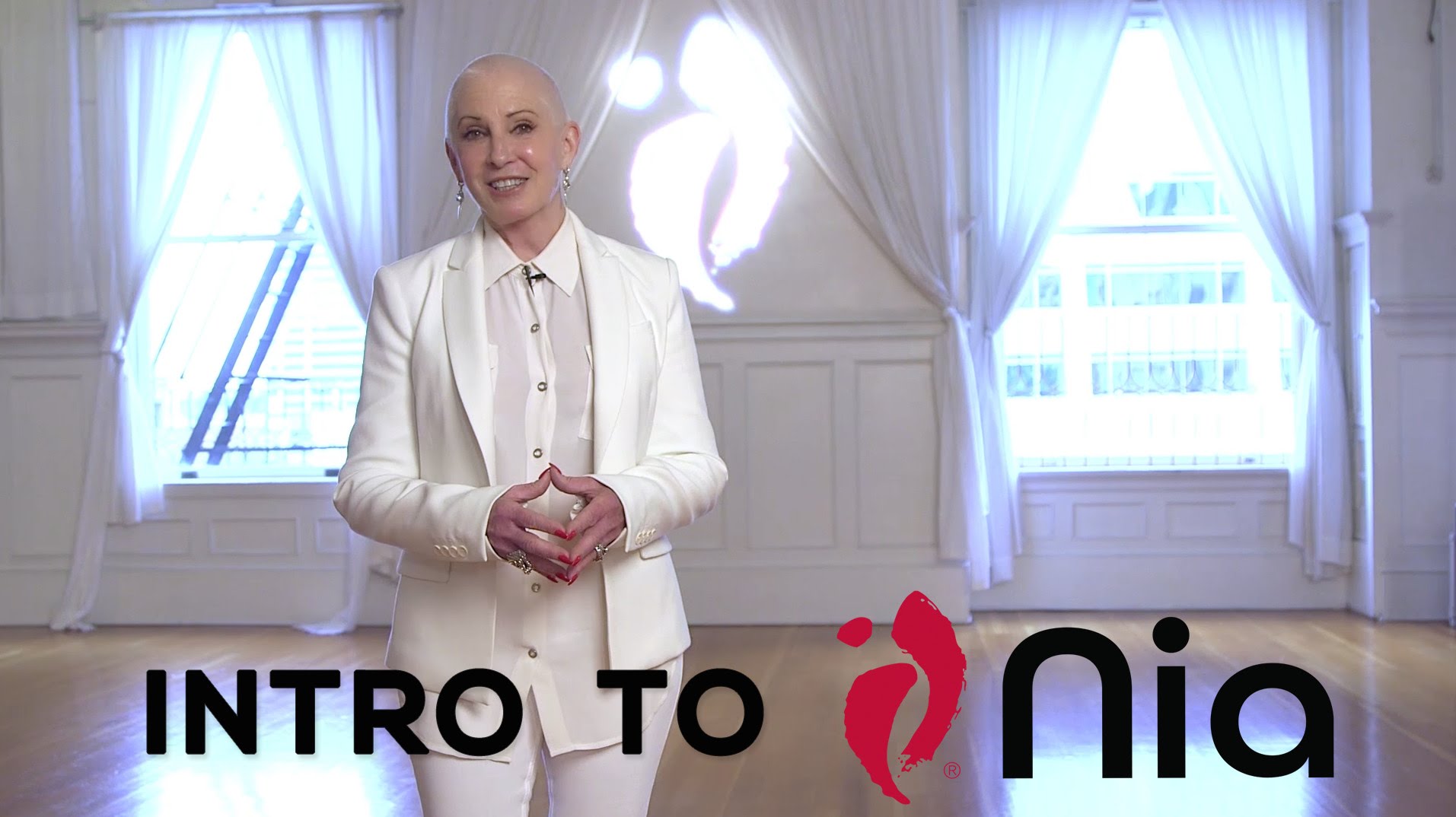Not into Zumba? Soul Cycle? Fitness Boot Camp? If competitive hard-core fitness classes turn you off, then Nia, a quirky, gentle mind-body movement dance class with roots in the 1980s, might be just your thing.
Imagine a class where you are free to wander barefoot wherever you want across the floor while waving your arms and legs any direction you feel like.
At other moments, everyone in the class might punch the sky and grunt, sway their hips to a gentle Latin beat, kick up like a Korean kick boxer, clap to an infectious rhythm or lie on the floor visualizing each part of their bodies releasing stress.
There’s no jumping, no jarring, no sudden twists and turns—and no complex dance moves to learn. Most of the time, class members are moving their bodies to captivating, joyful music in easy-to-learn steps.
With its embracing ethos and joyful moves, it’s no wonder that this exercise is steadily growing in popularity—even as other fitness fads come and go.
FUSION FITNESS
Nia (pronounced “NEE-ah”) is a body-mind conditioning program that incorporates moves from martial arts (Aikido, tai chi, taekwondo), dance (jazz, modern, Duncan—a nature- and art-based approach to dance) and healing arts (yoga, Alexander technique, Feldenkrais) into each workout. The martial arts bring precision strengthening moves…dance enhances cardio while emphasizing personal expression…and healing arts allow moving in ways that simultaneously strengthen and stretch the body. The odd name is now said to stand for “neuromuscular integrative action,” although it originally meant “nonimpact aerobics.”
Nia’s 60-minute barefoot workouts combine 52 moves that work with and against gravity to target the base, core and upper extremities of the body, as well as large muscle groups and small detail-oriented muscles. The classes, taught by certified Nia instructors, are designed to build cardio conditioning, strength, mobility, agility, postural stability, endurance and flexibility, while also training your attention, relieving stress in your body and mind, and enhancing sensory awareness.
Nia isn’t new at all—it actually dates back to the early 1980s. But it’s growing and is now taught by 2,500 certified instructors—they’re rated white to black, just as with martial arts—in nearly every state as well as in several dozen other countries. About a decade ago, there were fewer than 1,000 instructors. One reason for the increasing popularity—people of all ages and all levels of physical conditioning, from the healthiest to those dealing with fatiguing disease, can enjoy and benefit from the classes.
CONSCIOUS DANCING
Nia is designed not just to help us move for health but to help us become more mindful of our bodies. “There’s magic that happens when one stops thinking and starts focusing attention on what the body is saying and what the sensations are telling us,” explains Debbie Rosas, cofounder of Nia, which is based in Portland, Oregon, and coauthor of The Nia Technique. “Your relationship with your body is the most important relationship in your life.”
To be sure, there is very little academic research on Nia, although one randomized study did find a benefit for breast cancer patients undergoing radiation, who often experience tremendous fatigue. Compared to a group that got standard post-radiation care, women who practiced Nia for 20 to 60 minutes three times a week over 12 weeks had much less fatigue. Nia classes have also found popularity as movement therapy for people with Parkinson’s disease.
But whether you’re young or old, fit or flabby, well or ill, the best kind of exercise is one that you actually do. If it’s fun, you’re more likely to want to go back. In an era of competitive fitness classes, Nia classes stand out as feel-good communal experiences.
Here at Bottom Line, we’ve taken Nia classes, and fun is exactly what they are. “Fitness is not something you see—it’s something you feel,” Rosas says. “People leave a Nia class feeling refreshed and energized, not depleted.”
WATCH NIA IN ACTION
In the videos below, you can listen to Debbie Rosas introduce Nia—and then see how one instructor gets her class moving, punching and smiling.
https://www.youtube.com/watch?v=Erf-lHbdPo8
To find a class near you, go to the class finder at NiaNow.


